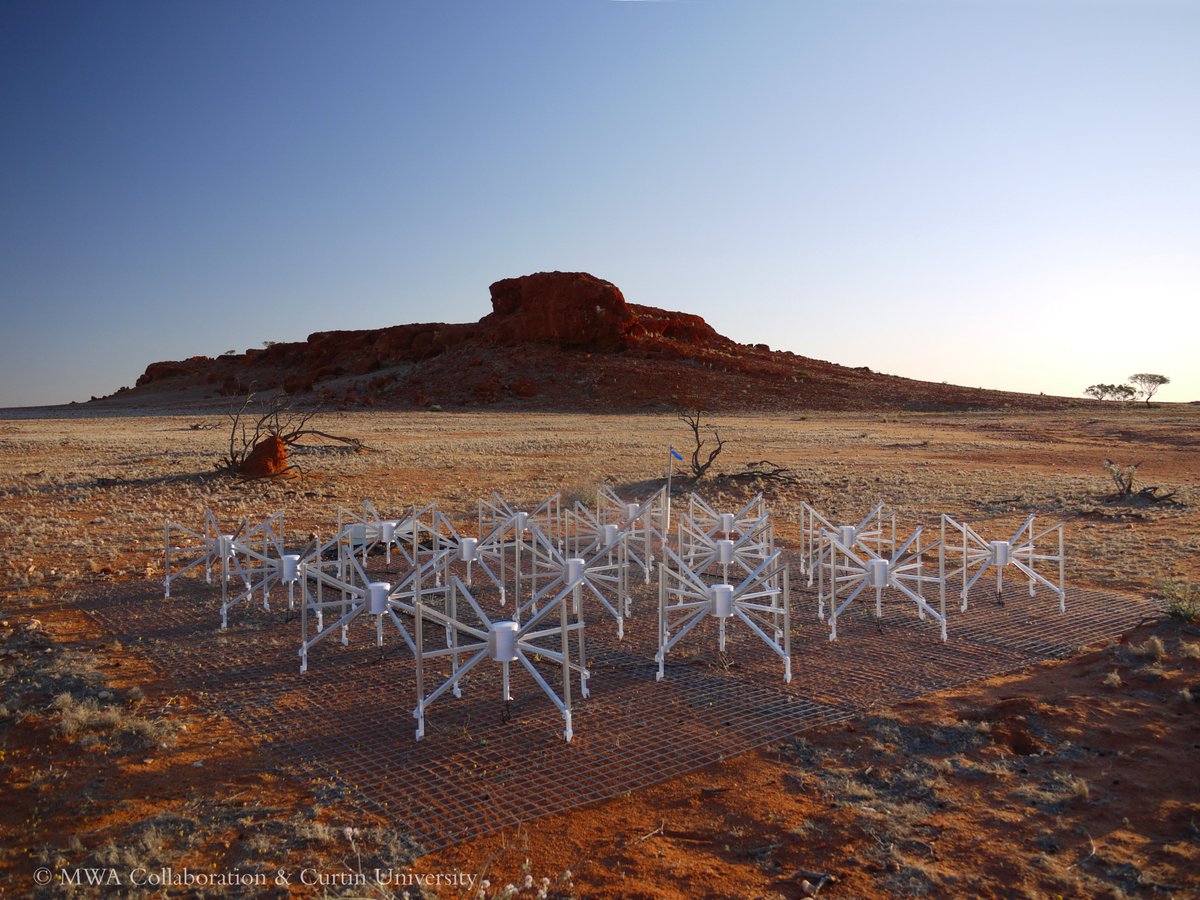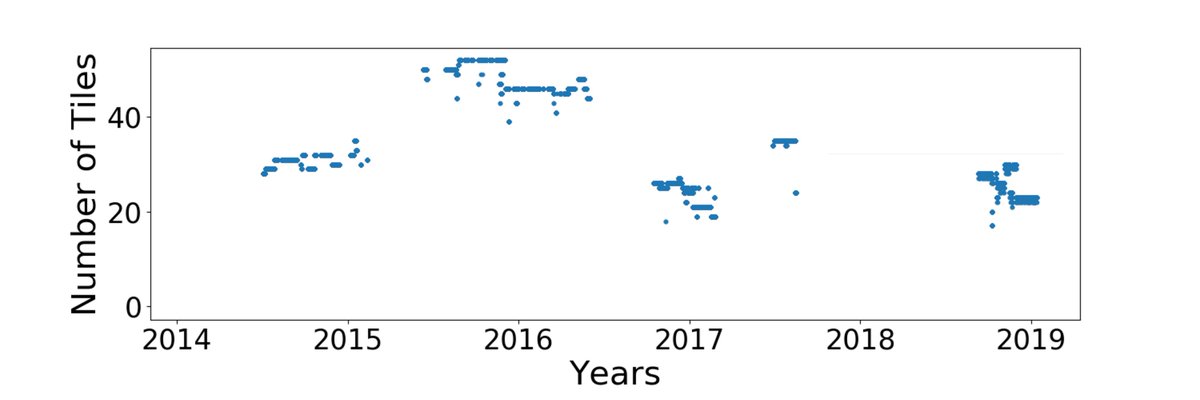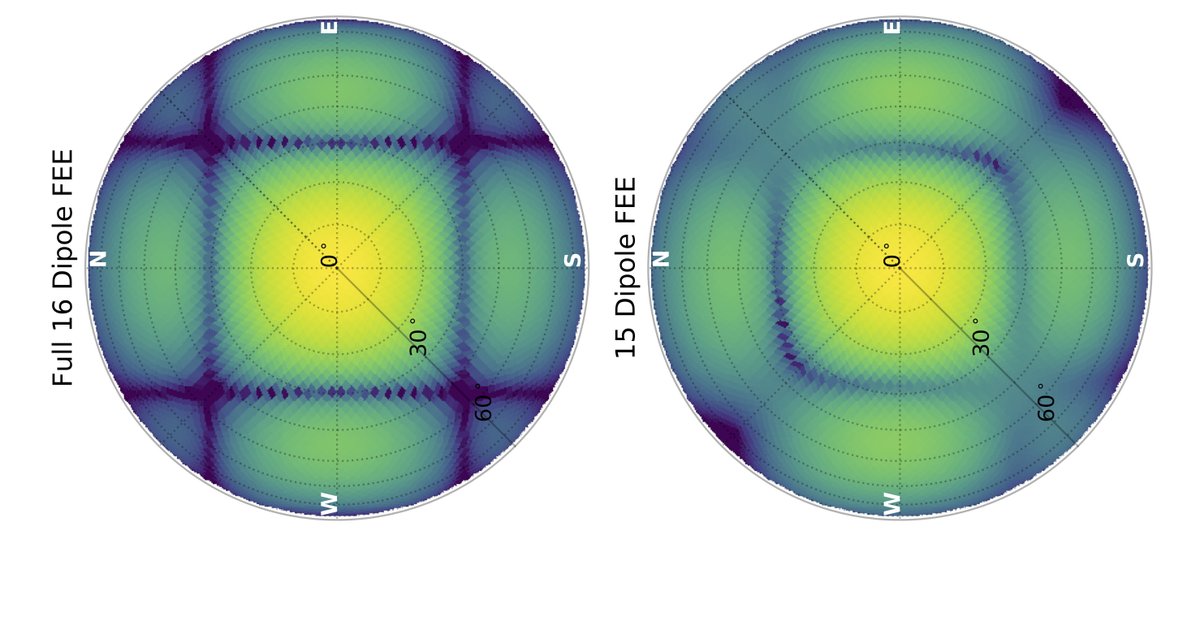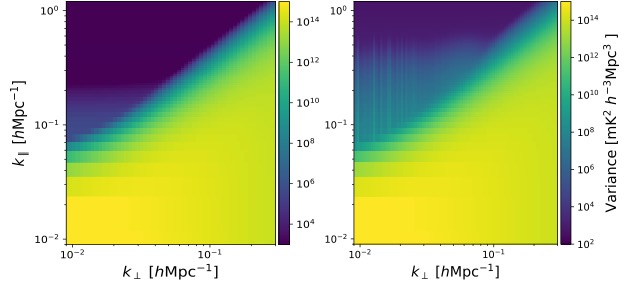So why is it important to understand how broken @mwatelescope antennas change the way the array sees the sky?
Well, not accounting for those broken ones hinders us from unravelling the birth story of the first stars!
Paper pre-print https://arxiv.org/abs/1911.13088
And">https://arxiv.org/abs/1911.... a thread (1/8)
Well, not accounting for those broken ones hinders us from unravelling the birth story of the first stars!
Paper pre-print https://arxiv.org/abs/1911.13088
And">https://arxiv.org/abs/1911.... a thread (1/8)
The @mwatelescope consists of 256 "tiles", each tile in its turn is made up of a 4x4 grid of dipoles. I& #39;d prefer to describe them as replicator-looking-spider-like-antennas, but sure let& #39;s call them dipoles. #dipoles (2/8)
To detect a radio signal that tells us the birth story from the first lights in the Universe, we only use 128 tiles at a time due to computational reasons. We correct the data after observing to properly account for the change in antenna responses. (3/8) #reionization
But to calculate those corrections, we need accurate models of how the tiles see the sky, and this changes when a dipole breaks. Below you& #39;ll see the number of tiles with a broken dipole over years of observing. Yes, it& #39;s a thing. (4/8) #statistics
We use this information to re-model the way the tiles view the sky when we fine tune the data. But for our thought experiment we pretend we don& #39;t know anything.
Curious to the difference between a complete and a broken tile& #39;s view? See this plot from Line+. 2017 (5/8) #models
Curious to the difference between a complete and a broken tile& #39;s view? See this plot from Line+. 2017 (5/8) #models
It turns out that when you model things incorrectly it ends up haunting you. Left is what we want see in our data, on the right is what we get. The extra bit of green is NOT good. #Contamination (6/8)
Is all lost?
Well, the effect of broken dipoles is weaker than contaminants that currently limit us, and we do re-model the tiles. Phew!
But we do have to closely look at how well we re-model the tiles, and how well we understand the & #39;brokenness& #39; of the telescope. (7/8)
Well, the effect of broken dipoles is weaker than contaminants that currently limit us, and we do re-model the tiles. Phew!
But we do have to closely look at how well we re-model the tiles, and how well we understand the & #39;brokenness& #39; of the telescope. (7/8)
But we are slowly getting there! Our international team has recently (re-)analysed both old data and new data, resulting into us getting closer to the signal than ever.
So stay tuned! (8/8) #ReionizationPun
https://phys.org/news/2019-09-stars-universe.html">https://phys.org/news/2019... https://www.universetoday.com/144188/astronomers-are-about-to-detect-the-light-from-the-very-first-stars-in-the-universe/">https://www.universetoday.com/144188/as...
So stay tuned! (8/8) #ReionizationPun
https://phys.org/news/2019-09-stars-universe.html">https://phys.org/news/2019... https://www.universetoday.com/144188/astronomers-are-about-to-detect-the-light-from-the-very-first-stars-in-the-universe/">https://www.universetoday.com/144188/as...

 Read on Twitter
Read on Twitter







